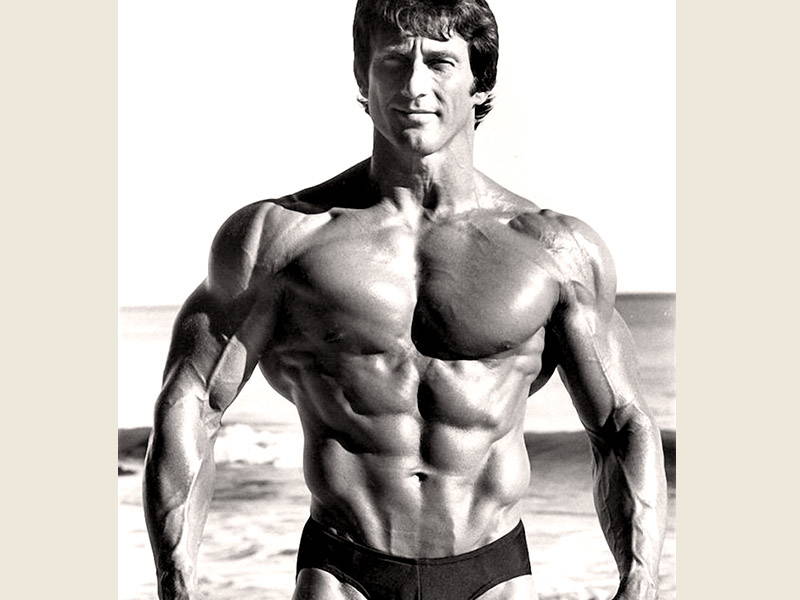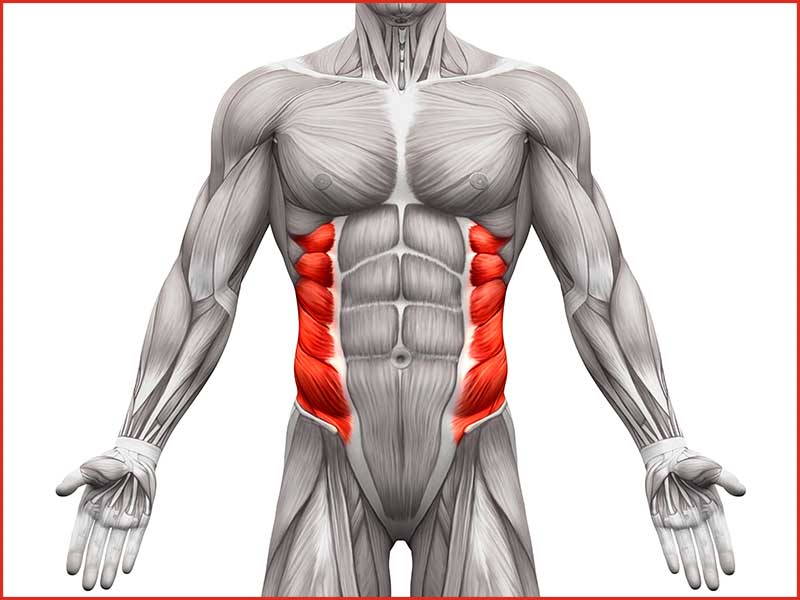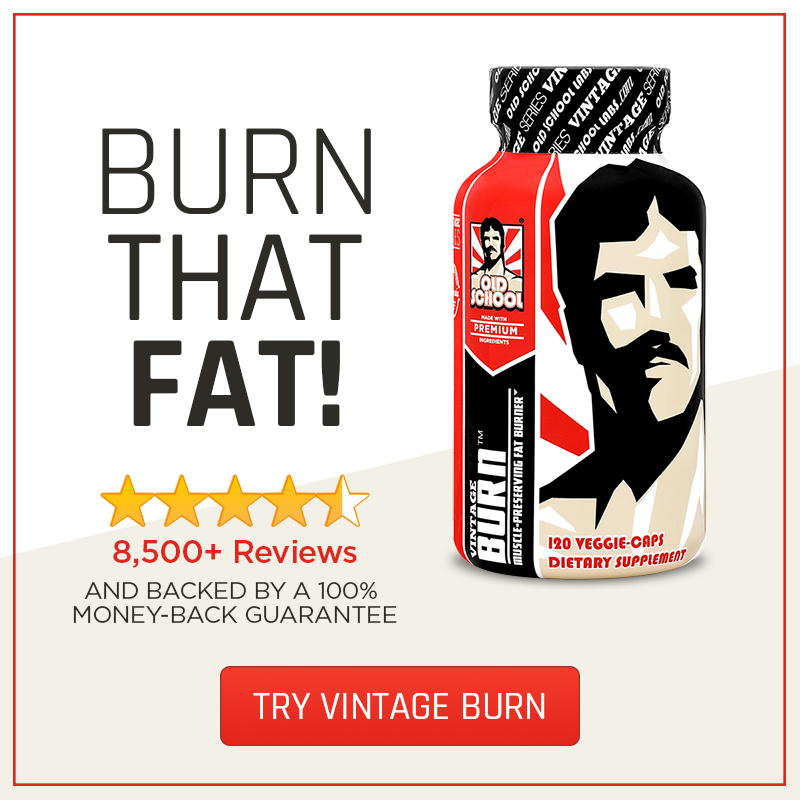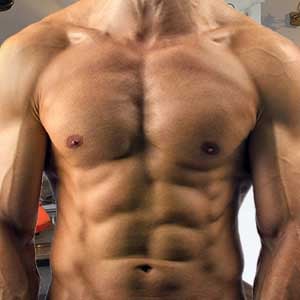
How to Get an Adonis Belt: Exercises & Diet for V-cut Abs
Key Takeaways
- The Adonis belt, or iliac furrow, gives your lower abs a nice V-shape. Generally, individuals with a visible Adonis belt have low body fat and strong core muscles.
- The deep grooves that form the iliac furrow are ligaments, not muscles. This area is bordered by the transverse abdominis and obliques.
- Crunches and sit-ups are not enough for developing a visible Adonis belt. From your diet to your ab workouts, every detail matters. Read on to see what it takes to get V-cut abs!
Take a look at your favorite Calvin Klein ads. Better yet, go online and google Adonis, Michelangelo’s David, and other famous statuses. Next, check out Sergio Olivia, Larry Scott, Frank Zane, and other Golden Era bodybuilding legends.
At first sight, it’s hard to tell what they have in common (other than a sculpted physique!). Now, look closer. What do you see?

They all have that deep V-shaped cut in the abs. We’re talking about the coveted Adonis belt, Apollo’s belt, or sex lines — whatever you want to call them.
This sought-after V-shape takes its name from Adonis, the god of beauty and fertility in Greek mythology. The grooves that form it are ligaments, not muscles.
The iliac furrow, or Adonis belt, is visible where the lower abdominal muscles meet the obliques. In general, it’s an indicator of low body fat and strong core muscles. Since its shape comes from the inguinal ligament, no exercise will make it grow.
What you can do is to get your body fat percentage below 12% or so and work your deep core muscles. Ab exercises alone won’t help.
Not sure where to start? Today we’ll show you how to accentuate the Adonis belt and look like a Greek god — or goddess. Yes, you’ve heard well — both men and women can get V-cut abs.
Let’s cut to the chase and see what it takes to define your sex lines!
What Is the Adonis Belt?
Contrary to popular belief, the Adonis belt isn’t a muscle.
These lines are actually the two inguinal ligaments that run from your hip bones to the pelvic region. Their role is to bridge the muscular and neurovascular structures passing from the pelvis to the deep fascia of the thighs.

The ligaments that form the iliac furrow are bordered by the deep core muscles. Their prominence depends on your body fat percentage and the thickness of your transverse abdominis and oblique muscles.
Everyone has inguinal ligaments and core muscles, but few are able to get an Adonis belt. Simply put, you have to make it show. The key is to clean up your diet, lose stubborn fat, and build a strong core.
Developing core strength requires a well-rounded workout — and not just ab exercises. Crunches and sit-ups have their role, but it takes more than that to get V-shaped abs.
Some people can develop an Adonis belt without too much effort. Others must work extremely hard to achieve that nice V line. As mentioned above, genetics play a big role.
What you eat matters most. Depending on your genetics, you may need to go below 6% body fat to have a visible Adonis belt. That’s not sustainable in the long-term.
This physical attribute doesn’t necessarily indicate good health. Imagine walking around at 8, 5, or 4% body fat levels for weeks or months just to maintain your looks! After all, there’s a reason why pro bodybuilders go through cutting and bulking phases.
Even so, maybe you’re one of the lucky few who don’t need to go to extremes to get V-shaped abs. That being said, follow these steps to develop an Adonis belt that turns heads!
Build a Strong Transverse Abdominis Muscle
A thick transverse abdominis (TVA) muscle will accentuate your Adonis belt and protect against injuries.
This deep core muscle stabilizes the trunk and lower back. It runs between your ribs and pelvis, creating a natural girdle or corset that protects your spine and vital organs.

Along with your obliques, the TVA is an integral part of the so-called Adonis belt. Therefore, you must focus on working these muscles. Most trainers recommend the plank and other isometric movements, but there are better ways to activate and strengthen the transverse abdominal muscle.
We suggest starting with abdominal bracing and hollowing. Both exercises activate the deep core muscles, including the TVA, and strengthen the local spinal stabilizers. Over time, they may help prevent or reduce low back pain and improve sports performance.
Deadlifts, squats, and other compound movements engage the deep core muscles, too. However, they’re not as effective as direct ab work at building a strong TVA.
The National Academy of Sports Medicine (NASM) states that abdominal hollowing activates the deep core muscles to a greater extent than abdominal bracing. Other sources report that both exercises are equally effective or that abdominal bracing is more effective than abdominal hollowing.
One thing is for sure: both techniques activate the TVA and help stabilize your spine. For best results, consider alternating between the two.
Abdominal Hollowing Tips and Variations
Abdominal hollowing requires drawing in your belly button toward the spine and holding for a few seconds. It’s that simple!
This technique improves lumbopelvic-hip stability while activating both the TVA and oblique muscles. It’s even more effective for those who also practice abdominal bracing. Don’t pick one at the loss of the other, advises the NASM.

Note that abdominal hollowing has several variations.
Here’s the basic version:
- Lie stomach facing up and draw your belly button in toward your spine.
- Hold for at least six seconds and repeat. Take deep breaths as you practice the movement.
Research published in the Journal of Physical Therapy Science evaluated the activation of abdominal muscles during the hollowing exercise in four different positions.
The activity of the transverse abdominis and internal obliques was highest in prone lying followed by wall support standing and kneeling on all fours. Each exercise was performed for 10 seconds.
Are you up for a challenge? Try these more advanced versions of the hollowing exercise:
1. Wipers
- Lie on your back with your legs extended in front of you.
- Lift your arms at the shoulder level and then raise your legs.
- Practice abdominal hollowing while moving your legs to the left and right.
- If you find it too difficult, bend your knees slightly for increased stability.
2. Flutter Kicks
- Lie on your back with your arms at your sides (or under your glutes as the video suggests)
- Lift your legs a few inches above the floor. Keep your toes pointed.
- Raise one leg higher and then lower it down while raising the other leg. Alternate back and forth.
- Practice abdominal hollowing while doing the flutter kick.
3. Scissors
- Lie on the floor with your legs straight. Place your hands under the lower back.
- Lift your legs and move them in a scissoring motion horizontally (one moving on top of the other and then switching). Practice the hollowing exercise while performing this movement.
Practice Abdominal Bracing
Touted as one of the best Adonis belt exercises, abdominal hollowing requires tensing your abs and holding the contraction. Imagine you’re being punched in the gut and squeeze your abs to minimize the impact.
Abdominal hollowing feels like you’re trying to touch your belly button to your spine.

Abdominal bracing, on the other hand, requires a simultaneous contraction of the multifidus, transverse abdominis, and pelvic floor muscles. Simply put, it creates a natural “belt” by activating all the layers of your abdominal and lower back muscles.
This technique increases stability and stiffness throughout the lumbar spine. Once you have mastered it, you may use it anytime during training or throughout the day. It’s a great way to protect your back, especially when lifting heavy or performing explosive movements.
Follow these steps to brace your deep core muscles:
- Lie on your back with your knees bent. Place one hand on your stomach.
- Brace your core as hard as you can and breathe using your diaphragm.
- Hold the contraction for at least 10 seconds. Relax and repeat.
If you do it right, you should feel your sides stiffen. Remember to keep your back straight as you breathe in and out.
This exercise can also be performed from a standing position. Do it immediately before and during bench pressing, deadlifting, squatting, and other heavy lifts to reduce the stress on your lumbar spine.
In addition to abdominal bracing and hollowing, you can try the plank, Russian twist, leg raises, and more. See our guide to the best ab workouts and exercises for inspiration!
Best Oblique Exercises to Develop an Adonis Belt
As discussed earlier, it’s important to work both the TVA and oblique muscles to reveal your Adonis belt. The above exercises will strengthen your obliques, but they’re not enough for getting V-cut abs.

The oblique muscles have more than just an aesthetic function. They also protect your internal organs, increase intra-abdominal pressure, and flex the trunk. On top of that, they enable the rotation of the spine.
Weak obliques may result in hip and back pain, limited mobility, and increased risk of injury. Your posture and stability may suffer too.
Make sure your core workouts include at least two or three oblique exercises.
These moves are particularly effective:
- Russian twists
- Ab wheel rollouts
- Side planks
- Side planks with leg lifts
- Push-up to side plank
- High-pulley oblique cable crunches
- Spiderman crunches
- Bicycle crunches
- Alternative V-ups
- Cross-body mountain climbers
- Dumbbell side bends
- TRX oblique rollouts
- Cable woodchop
- Single-arm farmer’s carry
Generally, crunches and other bodyweight ab exercises are suitable for higher reps. Core exercises performed with a barbell, dumbbells, medicine balls, or other weights should be done with fewer reps. Work your core muscles, including the obliques, after strength training.
Note that what you eat makes all the difference. You can do hundreds of crunches and still have no ab definition if your body fat is higher than 15% or so.
We’re not saying that low body fat is an advantage in bodybuilding, but it’s a must for getting V-cut abs. This brings us to the next point.
Get Your Diet in Check
If you’re a regular reader of our blog, you should already know what it takes to lose fat and preserve lean mass. There’s the keto diet, the paleo diet, intermittent fasting, and more. Or you can simply calculate your macros and plan your meals accordingly.
Intermittent fasting, for example, requires abstaining from food for at least eight hours every day. This approach is clinically proven to reduce body fat, increase growth hormone levels, and improve insulin response.

Depending on how much you know about nutrition, you could try to figure out your macros and take it from there. Read our guide to the IIFYM diet and how to determine the optimum amounts of protein, carbs, and fat for weight loss.
Keep in mind that fat loss requires a calorie deficit. Basically, you need to take in fewer calories than you burn. This can be done through diet, exercise, or both.
Follow these steps to determine how many calories you should eat in a day based on your goals. Next, estimate the number of calories you burn on a daily basis. Use this information to get your macros right and create a meal plan that fits your lifestyle.
No matter what diet you’re on, prioritize clean eating and avoid hidden sugars. Steer clear of energy drinks, soda, store-bought fruit juices, and refined flour. Processed meats, junk foods, and refined oils are just as bad.
Write down what you eat and track your workouts. Take your body measurements every two weeks or so and adjust your diet as needed. Consider using Vintage Burn™ to cut up faster and ignite your metabolism.
Tips From The Coach

“The Adonis Belt is one of the most sought after features of a ripped physique for both men and women. It’s not enough to just have a great six-pack of abs and a ripped midsection. The total abdominal look also requires the Adonis Belt as well.
Because the typical ab exercises like incline sit-ups, crunches, cable crunches and knee raises (hanging, seated or lying down) don’t affect the Adonis Belt, it’s a great idea to add the exercises listed in the article to finish off the abs and add that polish to the stomach region.
Here is a good abdominal routine I would recommend:
- Superset:
- Incline Sit-ups – 3 sets, 20 reps
- Incline Leg Raises – 3 sets, 20 reps
- Superset:
- Kneeling Cable Crunches – 3 sets, 20 reps
- Hanging Knee Raises – 3 sets, 25 reps
- Perform as a Giant Set, no rest between all four exercises:
- Wipers – 2 sets, 20 reps
- Scissors – 2 sets, 20 reps
- Russian Twists – 2 sets, 20 reps
- Side Planks – 2 sets, 30 seconds each side”
Genetics Isn’t Everything
As you see, it’s not impossible to get an Adonis belt even if you’re on the heavier side. It won’t be easy, but it’s worth the effort. While it’s true that genes can influence the size and shape of your core muscles, it’s your diet and training plan that matters most.
Contrary to what you may have heard, it’s not necessary to work your abs every day to get results.
If you train your core muscles two or three times per week, that’s more than enough to make progress. Focus on your transverse abdominis and oblique muscles but don’t neglect compound movements like the squat and deadlift.
Most importantly, eat for your goals. Determine your energy requirements, fill up on protein, and cut back on carbs. Use a quality fat burner along with protein powder and amino acids to lose fat without sacrificing lean mass.
What’s your approach to ab training? Are there any exercises or workout plans that you’d recommend? Drop a line in the comments section below to share your experience!









